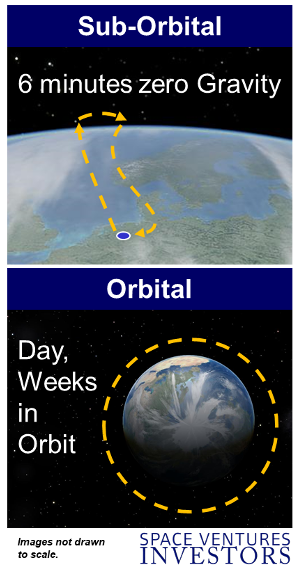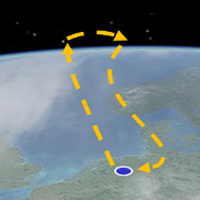Recent innovation in space tourism has reached new heights thanks to companies like SpaceX, Blue Origin, and Virgin Galactic, who have pioneered groundbreaking approaches to space travel, making it more accessible and safer for non-astronauts.
SpaceX’s development of reusable rocket technology has dramatically reduced costs and increased the frequency of space travel. Blue Origin’s New Shepard spacecraft has offered suborbital flights, providing passengers with a few minutes of weightlessness and stunning views of Earth from the edge of space.
Meanwhile, Virgin Galactic’s SpaceShipTwo (visit Virgin Galactic Share Price page) has pushed the envelope with its air-launched spaceplane design, offering a unique combination of rocket-powered ascent and gliding descent. These developments have not only opened the doors to commercial space tourism but have also laid the groundwork for future exploration and potential habitation beyond Earth.
A real breakthrough in space tourism would be trips to the moon, not necessarily landing on the moon, but involving orbital manoeuvres, and a safe return to earth
Understanding the Types of Space Tourism
Sub-Orbital
Sub-orbital flights have gained much of the focus of space tourism and the market is expected to bloom as soon as safe, reliable and profitable vehicles are operational more frequently and cheaply. The tip is essentially a ride up, a brief pause at the apex of the mission, and a safe descent.
Already there are a number of sub-orbital craft under development or soon to be operational and reservations have already been made.
Current prices vary between $95,000 and $250,000 U.S. Dollars, and are expected to lower to $50,000 within 10 years.
Currently the space tourism buzz is on three contenders that have already stated estimated prices:
- Virgin Galactic Spaceship 2: ~$250,000 – Their Space Tourism Passenger list is about 750. Visit their profile on Space Stocks – Virgin Galactic.
- Blue Origin: Price Unknown – A focus on rocket-powered Vertical Takeoff and Vertical Landing (VTVL) vehicles for access to sub-orbital and orbital space.
- Airbus Defence and Space: ~$250,000 (no news of late)
- Lastly, XCOR is no longer operational: The price was ~$150,000 – Their Sub-Orbital Space Tourism Passenger list was about 300.
Orbital Space Tourism
Orbital Space Tourism is still at an early stage yet can be larger than sub-orbital. If sub-orbital is the flight to your destination, then orbital will be the hotel or resort.
To date only one firm, Bigelow, has placed prototype orbital accommodation in orbit.
SpaceX and Axiom Space have developed space tourism as a service to the International Space Station
As sub-orbital tourism takes off, it is inevitable that orbital will follow. True orbital space stations also rely on the means of ferrying visitors (tourists and scientists) to and from them, and, engineering feats that have to out-do current manned space projects. Space Tourists are not Astronauts. And, Space Tourists must have some kind of wealth, expectations are millions per trip – See Bloomberg’s Space Tourism article . The scale of a floating space station, or a hotel, is not that far off because the means to build it are already in place: Multi-billion dollar finance is used for the construction of leisure projects like cruise liners, and improving lower-launch costs will mean cheaper payloads to haul the pre-fabricated parts of future space hotels into a steady orbit.

Space Tourism as an Investment
Investor and media interest in space tourism grows and space tourism companies continue to require capital to develop the technology and processes to make space tourism a reality. Larger space tourism companies are well funded, others offer an alternative technology and business case.
Simon Drake, Co-founder of Space Ventures Investors, was interviewed by The Times in July 2018 on the subject off investing in space tourism.
Within 5-10 years a larger space tourism business is possible providing:
‣ Significant long-term financing is in place related to the part of the process, e.g. a long-term bond for an orbiting facility and better placed launch facilities.
‣ A market floor is in place, this can be a growing list of potential space tourists or more succinctly, forward-booking leases of space habitats by tourists, countries and companies.
‣ Insurance, and other instruments to take the sting out of high-risk ventures, are in place.
The Historical Context of Space Tourism
Space Tourism is no different to any other type of expensive tourism.
High net worth individuals, wealthy families, and in general anyone that could afford a different experience, are willing to pay for a space tourism mission provided it is safe.

